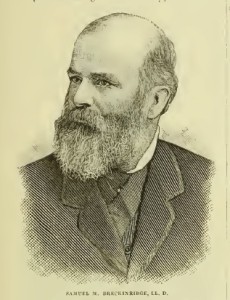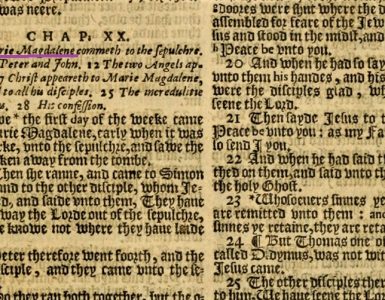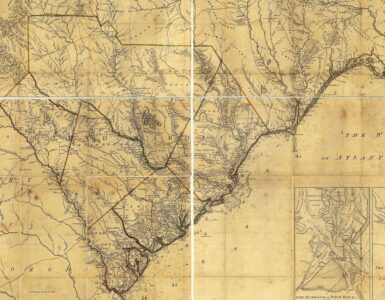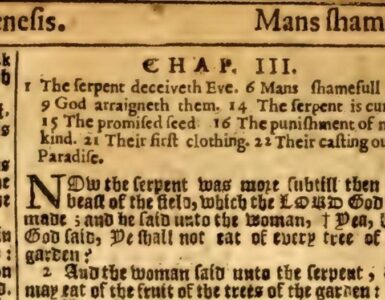 Samuel Miller Breckinridge was born in Baltimore to John and Margaret (Miller) Breckinridge November 3, 1828. He was named for Margaret’s father, Professor Samuel Miller of Princeton Theological Seminary. John was at the time associate minister of Baltimore’s Second Presbyterian Church. Margaret passed away in 1837, then four years later John died leaving their only son to the guardianship of his Miller grandparents with the assistance of his uncle, Robert J. Breckinridge. Samuel grew up influenced by a prominent Presbyterian family known for its affirmation of Old School historic Calvinism and Westminster Standards orthodoxy. His education was obtained at the best schools the family could provide before he attended Union College in Schenectady entering with the junior class in 1844. Uncle Robert, at the time ministering in Baltimore, had taken over care of the boy because his aging grandparents found his adolescent behavior very challenging. Samuel’s residence at Union was short-lived because he left New York for the Breckinridge homeland of Kentucky to attend Centre College in Danville, however once again, he did not complete his studies (but he would be named an honorary alum in 1857). The third attempt to graduate Samuel from college required a trip east to Princeton to attend the College of New Jersey, but once again, he did not graduate. The reason for studying at three schools without completing studies is likely due to disciplinary problems in light of his grandparents’ difficulties with him, but if his behavior could have been reined in to cross the college finish line his intellectual gifts and incredibly magnetic memory, like his uncle Robert’s, would have prepared him better for later life. However, not having a degree in hand did not inhibit his vocational future. Returning to Kentucky, he studied at the Law School of Transylvania University and was admitted to the bar at the age of twenty-one. In 1850 he was honored with the A. M. (artium magister, Master of Arts), then in 1877 the LL. D. (legum doctor, Doctor of Laws); both were given by Princeton College. He practiced law for two years in Lexington before moving west to St. Louis shortly after he and Virginia Harrison Castleman were married.
Samuel Miller Breckinridge was born in Baltimore to John and Margaret (Miller) Breckinridge November 3, 1828. He was named for Margaret’s father, Professor Samuel Miller of Princeton Theological Seminary. John was at the time associate minister of Baltimore’s Second Presbyterian Church. Margaret passed away in 1837, then four years later John died leaving their only son to the guardianship of his Miller grandparents with the assistance of his uncle, Robert J. Breckinridge. Samuel grew up influenced by a prominent Presbyterian family known for its affirmation of Old School historic Calvinism and Westminster Standards orthodoxy. His education was obtained at the best schools the family could provide before he attended Union College in Schenectady entering with the junior class in 1844. Uncle Robert, at the time ministering in Baltimore, had taken over care of the boy because his aging grandparents found his adolescent behavior very challenging. Samuel’s residence at Union was short-lived because he left New York for the Breckinridge homeland of Kentucky to attend Centre College in Danville, however once again, he did not complete his studies (but he would be named an honorary alum in 1857). The third attempt to graduate Samuel from college required a trip east to Princeton to attend the College of New Jersey, but once again, he did not graduate. The reason for studying at three schools without completing studies is likely due to disciplinary problems in light of his grandparents’ difficulties with him, but if his behavior could have been reined in to cross the college finish line his intellectual gifts and incredibly magnetic memory, like his uncle Robert’s, would have prepared him better for later life. However, not having a degree in hand did not inhibit his vocational future. Returning to Kentucky, he studied at the Law School of Transylvania University and was admitted to the bar at the age of twenty-one. In 1850 he was honored with the A. M. (artium magister, Master of Arts), then in 1877 the LL. D. (legum doctor, Doctor of Laws); both were given by Princeton College. He practiced law for two years in Lexington before moving west to St. Louis shortly after he and Virginia Harrison Castleman were married.
St. Louis was growing rapidly as the gateway to the West. Business opportunities were abundant because pioneers heading to the Pacific stocked up for their journey in St. Louis’s stores, and where there was business and population growth, lawyers would find opportunities. From 1840 to 1850 the population of St. Louis increased five-fold to nearly eighty thousand making it the eighth largest city in the United States. At the time Breckinridge crossed the Mississippi River and entered the city, the Missouri-Pacific Railroad was being constructed by crews laying rails as rapidly as they could and hoping to be the first to the Pacific. St. Louis was the place to be for industrious, foresighted entrepreneurs.
Breckinridge set up his office and quickly established a reputation for his expertise with the jots and tittles of law including among his clients the St. Louis Bridge and Tunnel Company, then later the Terminal Railroad Association. In 1854 he was elected to the Missouri House of Representatives for St. Louis and served one term. In 1859 he was elected Judge of the city Circuit Court, and then he was also selected a member of the Missouri Constitutional Convention, 1861-1863, which voted against Missouri seceding. In 1866 he was appointed Surveyor of Customs for the city serving for three years. George H. Shields was a colleague of Breckinridge and said that:
Judge Breckenridge was a man with an unusually high sense of honor and of uniform courtesy and politeness, springing from his genuine kindness of heart. He was the most generous and unselfish man I ever knew. His devotion to his friends was proverbial. He was a sound lawyer, and a man of quick perceptions and great common sense. He was exceedingly eloquent, and his speech and conversation sparkled with wit and humor. His great courtesy and admirable tact drew to him his professional brethren and a host of those outside with whom he associated. Perhaps no man at the St. Louis bar had more warm, devoted friends than Samuel M. Breckenridge. (The History of the Bench and Bar of Missouri, p. 122)
It is not clear when Breckinridge became a communing member of a Presbyterian church, but it is known that he was elected an elder of Second Presbyterian Church in 1871. Then in 1873, he was appointed to the General Assembly Committee on Fraternal Relations, and he was a commissioner to General Assembly when it met in St. Louis in 1874. In 1878, Judge Breckinridge was appointed to the General Assembly Committee of Revision of the Book of Discipline, of which he continued a member until the final report was presented to the assembly of 1882. He was also a member of the General Assemblies that met in New York first at Buffalo in 1881 and Saratoga in 1883. However, the last General Assembly he ever attended was the most eventful of his life and one that the commissioners would never forget.
When Breckinridge entered the Fort Street Presbyterian Church in Detroit, Michigan, May 21, 1891 for the 103rd General Assembly of the P.C.U.S.A., he and the other ruling elder commissioner from St. Louis Presbytery, Robert M. Rankin, took their seats. As they settled in and looked around they saw a grand gothic revival sanctuary outfitted with intricate millwork, exposed elaborate trusses, and adorned with colorful décor. The pulpit was centrally located on the platform in front of the organ with its banks of pipes installed for all to see. The pews at floor level and those in the tiers of the balcony that extended along three walls provided all those seated with unobstructed views of the pulpit. Judge Breckinridge and the other commissioners were convened by retiring moderator William E. Moore who delivered a sermon from John 3:17,
For God sent not His Son into the world to condemn the world, but that the world through Him should be saved.
Sixty-six year old professor of Old Testament William Henry Green of Princeton Seminary was elected moderator by acclamation. It was to be an eventful assembly meeting for the denomination’s highest judicatory and surely challenging for Moderator Green as sessions extended for thirteen days, minus Sabbaths.
The proceedings commenced and some of the subjects covered included an overture on the subject of deaconesses that was sent down to the presbyteries, which the assembly referred to a committee to tally presbytery responses. The report of the Committee to Revise the Westminster Confession of Faith was received. Then the Permanent Committee on Editions of the Constitution reported its progress restoring the text of the confession, catechisms, and form of government back to their earliest versions beginning with the 1789 first edition. Judge Breckinridge was appointed to a committee to tally the answers of the presbyteries to an overture regarding changes to chapter 23, “Of Amendments,” in the Form of Government.
Events moved along smoothly as reports were given and actions taken until a telegram was received by Stated Clerk Moore announcing that Dr. Henry J. Van Dyke, who had been elected as Professor of Systematic Theology in Union Seminary (New York) “had died instantly last night from angina pectoris.” This was a shock to the assembly and later in the meeting a memorial composed by a special committee was adopted and sent to the family. However, the untimely death would further complicate an already difficult situation at Union Seminary caused by controversy regarding Professor C. A. Briggs. Van Dyke’s death meant that a new candidate would have to be located for his now unfilled systematic theology position.
In addition to his work on the tallying committee, Judge Breckinridge was a member of the Standing Committee on Theological Seminaries which presented a partial report beginning at 2:30 on Wednesday, May 27. The subject of the report was the appointment of C. A. Briggs as Professor of Biblical Theology at Union Seminary. The report was printed and available for the first order of the day on Thursday. The Briggs issue was divisive and the tension that had been building for months would be released in extended debate. Deliberation began on Thursday morning after the opening devotional exercises and continued until the assembly adjourned for lunch.
When the assembly reconvened at 2:30, Dr. S. C. Logan proposed an amendment to the committee report regarding Briggs, which opened the floor to debate. Judge Breckinridge made his way to the platform and spoke for twenty minutes in support of the work of the committee regarding Briggs and the report. When he ended his speech, he said, “I have discharged my duty,” and then he collapsed to the floor so that his head struck the platform with a loud, disturbing thud resounding in the cavernous sanctuary. The press was well represented because of the Briggs case and the New York Times reported that the large church was “packed to the doors” with people “standing in the aisles” and “even the city ordinance against placing chairs in the aisles had been disregarded.” All eyes were directed to the platform where the judge lay. A physician was called for from the assembly. He found Breckinridge gasping for breath as he was moved to a private room. The assembly suspended business. The concerned presbyters waited apprehensively for a report. The announcement that Judge Breckinridge was dead resulted in a loud groan from the pensive and concerned crowd.
It was a tragic loss of a fine and dedicated elder who was particularly gifted for work with the secondary standards of the church and had proven himself a knowledgeable churchman. The assembly appointed a committee to prepare a memorial and escort the body of Judge Breckinridge back to St. Louis. One member of the committee was his fellow elder, Robert Rankin, who was dumbfounded by Judge Breckinridge’s death. Former Michigan Governor Russell Alger placed his private rail car and a special train at the disposal of the committee for transporting Judge Breckinridge’s body. The tragedy that had unfolded before the presbyters, onlookers, and media of the day brought a contemplative pause to the proceedings. The banquet planned for 8:00 that evening was cancelled and a prayer meeting was scheduled in its place.
The body of Judge Breckinridge made its journey to St. Louis where it remained at home so family and friends could view his remains. On Sunday, May 31, the casket was taken to Second Presbyterian Church where the memorial service was led by the longtime pastor, S. J. Niccolls. The sanctuary was filled with many church friends, associates from the legal community, relatives, and concerned citizens. Following the service, the immediate family and members of the Princeton University Club gathered for a graveside service in the Bellefontaine Cemetery. Breckinridge had been president of the St. Louis chapter of the Princeton University Club despite not having an earned degree. His grave is marked with an impressive monument upon which is inscribed “Blessed are the dead which die in the Lord” (Revelation 14:13). Samuel was survived by Virginia and five of their daughters and two sons. The daughters were Margaret, Virginia, Mary, Almy, and Elizabeth, and the sons were David C. and John.
Ethelbert D. Warfield, brother of B. B. Warfield and second cousin of Judge Breckinridge, said in his memorial for his kinsman that,
The story of his life cannot be read in what he did, but must be sought in what he was. The humblest came to him for counsel, the strongest for encouragement; rich and poor, white and black, every class in the community, knew, honored, and loved him. He never forgot what he owed to others, and he had the courage to rebuke, as well as the interest to commend. It is needless to analyze what he was, for it is easy to sum it up in what he wished to be, and happily was—the Christian gentleman.
Judge Breckinridge had matured from his rowdy adolescence. His life reminds parents today that the Lord sometimes works through the Spirit in sovereign grace to use that unruly child in a wonderful way. The point at which the life of Ruling Elder Samuel Miller Breckinridge, LL.D. transitioned from fighting grace to flourishing in it has not been determined, but it is clear that he was a Christian gentleman.
Barry Waugh
Notes—The header is snipped from the Library of Congress digital collection and is titled, “Saint Louis in 1893,” by Fred Graf, published by Fred Graf Engraving Co., St. L[ouis] Graf Engraving Co., c1893. The portrait is from Alfred Nevin’s Presbyterian Encyclopedia. By the time Breckinridge died, St. Louis had grown to just over 450,000 and was the fifth largest city in the country. No author is named for the book, One Hundred Fifty Years 1803-1953, published by Second Church, Baltimore, [1953]. Information from The New York Times was found in the issues for May 19, 21, 26, 28, 29, 31, and June 1, 1891. For the Detroit Assembly the Minutes of the General Assembly of the Presbyterian Church in the United States of America, New Series, Vol. XIV, A.D. 1891, Philadelphia: Presbyterian Board of Publication, by the Stated Clerk, 1891. Some general Presbyterian history as well as that of the congregation are given in Robert S. Sanders and Elizabeth G. Leggett, Annals of the First Presbyterian Church Lexington, Kentucky, 1784-1984, Tallahassee: Rose Printing, 1984. The Encyclopedia of the History of Missouri: A Compendium of History and Biography for Ready Reference, Louisville: The Southern History Company, 1901, by Howard L. Conard Shields, vol. 1, page 360, provides information about the marriage and children including the married names of the daughters and their husbands. George H. Shields’s half-page remembrance of Breckinridge is on page 122 of, A. J. D. Stewart, ed., The History of the Bench and Bar of Missouri: With Reminiscences of the Prominent Lawyers of the Past, and a Record of the Law’s Leaders of the Present, St. Louis: The Legal Publishing Co., 1898, p. 122. Even though he did not graduate Princeton, he is included in General Catalogue of Princeton University, 1746-1906, 1908, because of his two honorary degrees. For photographs of the impressive architecture of the Fort Street Church go to the page for it at Historic Detroit, which accesses a series of photographs of the church interior and exterior; I am not sure that the present appearance of the interior is the same as in Breckinridge’s day. A picture of the Breckinridges’ grave monument is available on find-a-grave. St. Louis population and ranking information is from the decennial U. S. Census as found at “Population history of St. Louis from 1830–1990” on the Boston University website.





